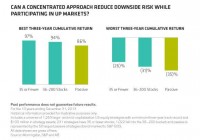5 Buy-Ranked Technology Mutual Funds
More often than not the technology sector is likely to report above par earnings than other sectors as the demand for technology and innovation remains high. However, technology stocks are considered to be more volatile than other sector specific stocks in the short run. In order to minimize this short-term volatility almost all tech funds adopt a growth management style with a focus on strong fundamentals and a relatively higher investment horizon. Investors having an above par appetite for risk and fairly longer investment horizon should park some of their savings in these funds. Below we will share with you 5 buy-rated technology mutual funds . Each has earned either a Zacks Mutual Fund Rank #1 (Strong Buy) or a Zacks Mutual Fund Rank #2 (Buy) as we expect these mutual funds to outperform their peers in the future. Fidelity Advisor Electronics I (MUTF: FELIX ) seeks capital growth. FELIX invests a major portion of its assets in companies involved in operations related to technology domain. FELIX focuses on acquiring common stocks of companies throughout the globe. Factors including financial strength and economic condition are considered before investing in a company. The Fidelity Advisor Electronics I fund is non-diversified and has returned 10.8% over the one-year period. Stephen Barwikowski is the fund manager and has managed FELIX since 2009. USAA Science & Technology (MUTF: USSCX ) invests a lion’s share of its assets in equities of companies that uses scientific and technological advancement and development to enhance their return. USSCX may invest a maximum of half of its assets in foreign companies. The USAA Science & Technology fund has returned 17.3% over the one-year period. As of January 2015, USSCX held 175 issues with 7.66% invested in Apple Inc. Janus Global Technology D (MUTF: JNGTX ) seeks capital appreciation over the long run. JNGTX invests a majority of its assets in companies that are expected to benefit from technological advancement. JNGTX invests in companies having impressive growth prospects. Though JNGTX invests in companies located in different countries including the US, JNGTX may focus on a particular country during unfavorable environment. The Janus Global Technology D fund has returned 6.7% over the one-year period. JNGTX has an expense ratio of 0.88% as compared to category average of 1.50%. Columbia Global Technology Growth Z (MUTF: CMTFX ) invests a large chunk of its assets in companies related to technology sector. CMTFX invests a minimum of 40% of its assets in foreign companies. Though CMTFX invests in companies irrespective of their market capitalizations, CMTFX may invest a sizable portion of its assets in small cap companies. The Columbia Global Technology Growth Z fund is non-diversified and has returned 12.4% over the one-year period. As of May 2015, CMTFX held 115 issues with 5.17% invested in Apple Inc. Fidelity Advisor Technology T (MUTF: FATEX ) seeks long-term capital growth. FATEX invests heavily in companies that carry out operations including providing and manufacturing products related to technology industry. FATEX invests in both US and non-US companies. The Fidelity Advisor Technology T fund is non-diversified and has returned 6.6% over the one-year period. FATEX has an expense ratio of 1.37% as compared to category average of 1.50%. Original Post Share this article with a colleague
